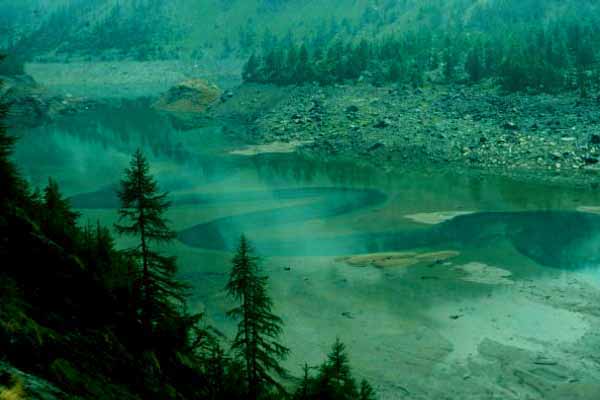
(0) Change is the second
most difficult thing.
understanding--
the first.
On the Possibility of Change

|
(0) Change is the second most difficult thing. understanding-- the first. |
(1) Change is first and foremost the taking away of unnecessary conflict,
contradiction or waste.
(2) Conflict is not just disharmony. Conflict is rather a misfit which persists
or sticks. In music, disharmony, or a certain friction between the tones,
always gives way to harmony, or a perfect fit or 'oneness' between the sounds.
Indeed, this back and forth between harmony and disharmony is what makes
movement possible. If disharmony sticks, however, movement grinds to a halt
and the sounds quickly degenerate into mere mechanical noise.Real change
begins, therefore, by first becoming aware of, and then, eliminating, the source
of conflict.
Conflict in this sense of getting profoundly stuck in misfit or disorder is in Nature
generally the exception and not the rule. Movements in the natural world which
fight against each other are generally quickly dissipated and resolved. This is so
because conflict wastes energy and therefore violates Nature's economy
of simplicity and the watercourse way. Remarkably, humankind is unique
as a species in its tendency to get stuck in conflict in this sense. If this is
true, then any attempt to change either ourselves or society in a fundamental
way must begin with a clear understanding of why this is so. Otherwise,
we shall remain stuck— in conflict.
(3) The simplest and most powerful of all possible freedoms is the freedom
to stop doing, regardless of the short-term difficulties thus encountered,
that which is inherently contradictory or wrong.
(4) The simplest of all possible tests is the test of doing without. When I fast,
I discover the significance of pure, healing water. When I live in a strange,
foreign land, I learn to appreciate and protect the beauty of my mother tongue.
When I pull out the plug of my composing machine, I sense again the mysterious
intelligence of the speaking voice and the hand with which I write. I give my
car away , and in the newfound silence I reawaken in my body an ear for natural
rhythm and sound. The fewer keys I own, I say to you, the more
lightly and easily I walk upon the land.
(5) Change? Zero pollution; 100% recycling; Zero war. Begin with the
work of cleaning up the thought which thinks it's not necessary; then
the one which says it's not possible.
(6) The thought that conflict or contradiction is somehow inevitable
is the most wasteful thought of all.
(7) In the midst of chaos, as the Chinese say, stand like a mountain,
like a tree. Some facts give one hope: Everything unnatural must emerge
from and eventually return to that which is natural. Even the most corrupt
or polluted of language or music was preceded by silence and
will soon vanish into it.
(8) There are three chaoses: generative chaos is the rich polyphony of simultaneous
orders of movement, characteristic of especially both living sound and water; In contrast,
degenerative chaos occurs when movements fight against or contradict one another;
Lastly— and most difficult to understand, passive chaos is the mysterious state
of silence which is full of the energy of neutrality.
Passive chaos is evidently related to the state in which the insight that change
is both necessary and possible arises; Degenerative chaos, on the other hand, is
what corrupts the energy that would be necessary to make the change; Lastly,
the magic of generative chaos is what makes change not only possible, but
virtually effortless and instantaneous.
(9) Any technological change is most likely as questionable as it is disruptive
if it happens faster than the disturbed vacant lot next door can heal itself.
10) Whether the seeds of new meaning somewhere set root and flourish
depends not on any form of promotion or publicity, but solely on the strength
of their resonance with our deeply felt spiritual need for truth.
(11) Every well-made path was once only a possibility. Because it is
well-made, daily use only makes it more beautiful.
(12) Passion only comes with the route one has found for oneself.

(Photo: Serpentine Flowform; Bottom of
a Dammed Sea, the Piedmont Alps)
| go to Picture/Poems:
Central Display
| go the the
Picture/Poems:
Archive of Miniatures | go to PicturePage:
Week IV |
|
Map
|
TOC:
I-IV |
TOC:
V-VIII |
Index |
Text Only
| Download
Page |
Newsletter
|
About
P/P |
About Cliff
Crego |
Copyright © 2002 Cliff Crego Comments to
crego@picture-poems.com
(created
XI.26.1999)
(Last update:
III.6.2002)